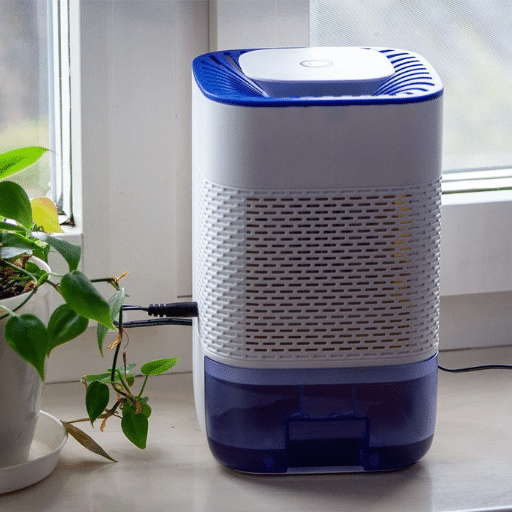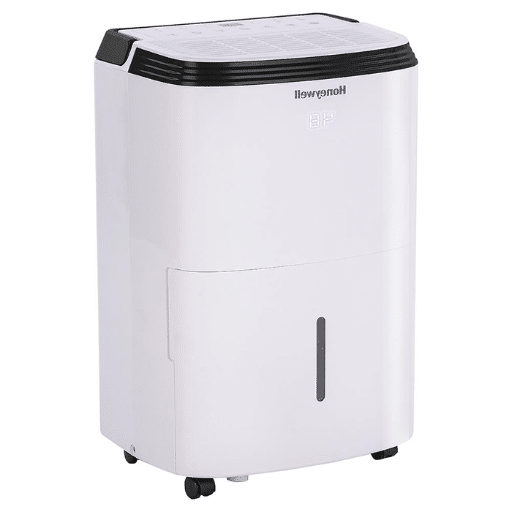About indoor air quality and comfort, two magnificent devices often come to the limelight-Humidifiers and Air Purifiers. Both are set to improve your home atmosphere, but they differ in objectives and benefits. The question comes up- Which should one select between the two, especially when one is not clear about what fits his or her need?-This article tries to cover the fundamental differences between a humidifier and an air purifier so that you understand their purposes, working, and which one would truly work towards healthier and comfortable living. After that, you would be able to confidently choose based on your lifestyle and what needs to be prioritized in your health.
Introduction to Humidifiers and Air Purifiers

In continuance with air purification, the humidifier focuses on air quality. It provides moisture to the air to facilitate an environment of dryness and discomfort, usually manifested in dry skin, sometimes in the form of irritated mucous membrane linings or sore throat sensations. The air purifier’s major role is to collect contaminants such as dust, pollen, animal dander, and smoke and dispose of them, thus ensuring cleaner air for sharing. So, while a humidifier is useful in drying conditions, an air purifier would act best against allergens or air contaminants. However, depending on your situation, using both devices simultaneously could very well be beneficial.
The ideal is to use both devices simultaneously indeed.
What is a Humidifier?
A humidifier is a household gadget that brings about moisture in the air to combat dryness in the indoor environment. It works by releasing fine water vapor or steam into the air to maintain or increase humidity inside the house or workspace. Various types of humidifiers include cool mist, warm mist, ultrasonic, and evaporative. These really come in handy in dry environments or during winters when forced air heating systems reduce the humidity inside, leading to dry skin, irritated nasal passages, and some form of respiratory discomfort. Giving proper humidity levels can even help in maintaining wooden furniture and floorings; also, they might curb the spread of those airborne viruses to make healthy air inside.
What is an Air Purifier?
The air purifier is meant for the purpose of ensuring purified air inside a room, through the dissipation of contaminants and particulates from the air. Air purifiers target and remove allergens such as pollen, dust, pet dander; hazardous pollutants such as smoke and chemicals; and sometimes airborne bacteria and viruses by applying technologies-base HEPA filtration, carbon filtration, or UV-C light. From recent figures of search trends from Google, it seems that interest in air purifiers has drastically increased, especially with people becoming more aware of air quality and the impact it has on health. Some of the modern-day air purifier models come with sensors that keep track of and display air quality levels in real-time to ensure effective performance. These devices become the best fit for any home that happens to have pets, where somebody holds allergies to asthma, or in any other urban setup filled with pollution. In that way, this is a healthy addition to a living setup.
Why Use a Humidifier or Air Purifier?
According to the latest trends and insights, humidifiers and air purifiers will improve the indoor air quality and support health. Searches have recently surging for these two instruments amongst persons seeking to reduce their respiratory problems and making their living environment more comfortable. Humidifiers balance the humidity levels to stop dry air that may irritate the skin, throat, or nasal passage. On the contrary, an air purifier removes pollutants such as dust, pollen, pet dander, and harmful microorganisms in the air that may induce allergies or asthma. Thus, this combination of air treatment devices is capable of targeting the most common air quality problems, which has made them fairly common among those seeking a fresh and healthy indoor environment.
Differences Between Humidifiers and Air Purifiers
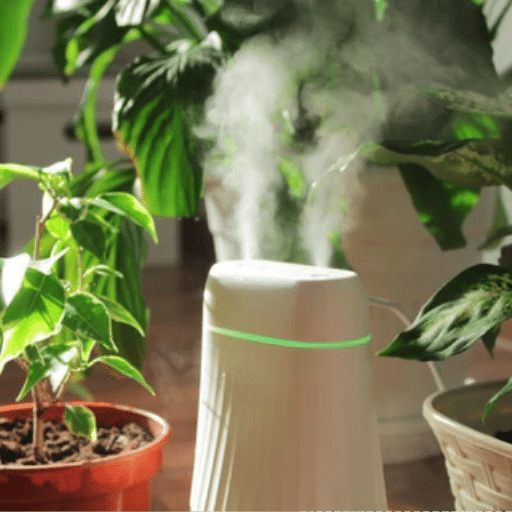
Humidifiers add moisture to the air to combat dryness, while air purifiers remove airborne pollutants to improve air quality.
|
Parameter |
Humidifier |
Air Purifier |
|---|---|---|
|
Purpose |
Adds moisture |
Removes pollutants |
|
Target Issue |
Dry air |
Polluted air |
|
Health Benefits |
Eases dryness symptoms |
Reduces allergens |
|
Key Features |
Increases humidity |
Filters particles |
|
Usage |
Dry climates |
Polluted environments |
|
Maintenance |
Clean water tank |
Replace filters |
|
Limitations |
Doesn’t clean air |
Doesn’t add moisture |
Functionality and Purpose
Humidifier Functionality
Adds Moisture: A humidifier adds moisture into the air so that it increases humidity, ruing ambient atmospheres in dry or artificially dried-air conditions.
Remedies Dryness: Acts against certain conditions-the diameter of which includes dry skin, throat irritation, or nasal discomfort.
Good for Dry Climate: Valuable for use where humidity is low, like winter time or desert climate.
Easy Maintenance: Cleaning of the water tank is required on an ongoing basis so as to prevent accumulation of mold or bacteria.
Limitation: Air pollution or allergens remain unregulated in the atmosphere.
Air Purifier Functionality
Removes Pollutants: Air purifiers are meant to purify the air by filtering out solid particles consisting of dust, pet dander, and pollen.
Lessens Allergens: Most beneficial for people who are allergic to airborne particles or vicinity of asthma.
Good for Polluted Environments: Useful for polluted urban areas or homes with smoking.
Maintenance of Filtration: The filters must be replaced regularly for the system to operate efficiently.
Drawback: It cannot add moisture to the air when the air is dry.
Health Benefits of Air Purifiers
The environment in which the air is contaminated greatly plays a factor in the health benefits air purifiers can offer. Below is a look at five major health benefits in detail:
Respiratory Health Conditions
Air purifiers assist in the removal of particulate matter such as dust, pollen, and pet dander, thereby bettering the chance of respiratory health problems such as asthma and bronchitis. Efficient air purifiers reduce indoor air pollution by an almost 99%, as per Environmental Protection Agency (EPA) studies.
Allergy Prevention
By removing allergens such as mold spores and pollen, air purifiers can make symptoms bearable for those who suffer from allergies. The American College of Allergy, Asthma & Immunology (ACAAI) states that purified air lessens dependency on medication in cases of severe allergy.
Lower Risk of Airborne Diseases
Once airborne germs and viruses are captured by air purifiers with HEPA and UV-C filters, less illness-causing agents are spread around the environment, including the flu virus. Studies from the public health domain have shed light on how air purifiers tend to lessen the person-to-person viral transmission rates in shared spaces.
Better Sleep Quality
From breathing to allergy triggers in the air, cleaner air enables restorative sleep. Studies suggest that relatively better air quality reduces risks of sleep disruption, particularly among those suffering from sleep apnea and sinus conditions.
Lower Exposure to Harmful Chemicals
Air purifiers containing activated carbon filters can disable vocs (volatile organic compound) present in home cleaning products, paints, and emissions from building materials. Their report revealed that such exposure reduction may reduce the long-term risk of related disorders, including carcinogenic changes or neurological problems.
Hence, air purifiers try to keep bound along with important health factors.
Health Benefits of Humidifiers
Respiratory Health
The humidifier adds moisture to the air and reduces dryness that can irritate the respiratory system. The maintenance of ideal humidity levels between 30 and 50 percent helps with alleviating symptoms related to asthma, sinus congestion, and throat irritation and is mostly beneficial during dry conditions or in dry climates.
Increased Skin and Lip Care
Moist air prevents skin and lips from drying and cracking, making them some of the conditions that lead to eczema flare-ups or chapped lips. During winters, when the heating system is turned on, it is this type of air that aggravates the dryness in the air.
Airborne Virus Spread Declines
According to certain studies, the percentage of the survival of airborne viruses including influenza will go down if the indoor humidity level exceeds 40%. Hence, a humidifier would set an environment in which the particles would sink very fast, greatly reducing transmission and hence spreading of the virus.
Lack of Sleep
The air inside being kept moist and clear of passageways allows the humidifier to reduce snoring and ease patients to sleep faster; however, the snoring of a partner disturbs the uninterrupted sleep of patients, especially under dry conditions.
The Setting of Furniture and Indoor Plants
Introducing moisture in the drying atmosphere within prevents wooden furniture from cracking or shrinking, while allowing indoor plants to flourish by providing them with an environment similar to that of their natural habitat. This will certainly help in making the environment at home healthier and pleasing.
Common User Questions: Humidifier vs Air Purifier
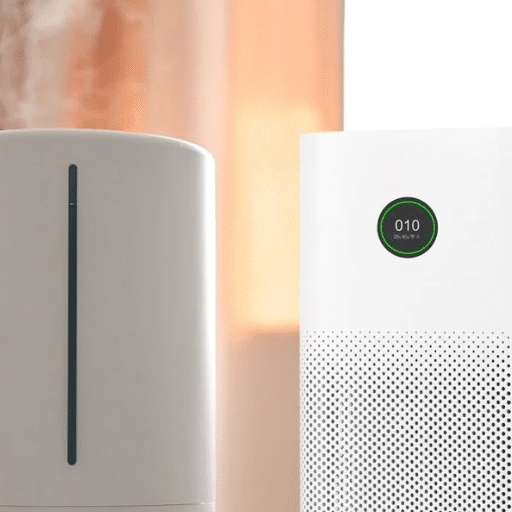
Humidifiers add moisture to the air to combat dryness, while air purifiers remove airborne pollutants to improve air quality, and both can address specific user needs.
|
Question |
Humidifier |
Air Purifier |
|---|---|---|
|
Stuffy Nose |
Loosens mucus |
Removes allergens |
|
Dry Skin |
Adds moisture |
No effect |
|
Allergy Relief |
No direct impact |
Filters allergens |
|
Cough Relief |
Soothes dry throat |
Removes irritants |
|
Winter Use |
Prevents dryness |
Filters indoor air |
|
Combined Use |
Adds moisture |
Cleans air |
Do I Need an Air Purifier or a Humidifier?
An air purifier or humidifier selection depends on one’s necessity and the conditions prevailing in their domicile. For instance, an air purifier is considered the better choice, when one’s main problem is air-quality improvement by way of removing allergens, pet dander, dust, and harmful particles. Recent data also reveal that most people look for air purifiers to relieve allergy symptoms and to improve their overall air quality, mainly in urban areas where pollution levels are high.
However, when dry air is a problem, such as during the winter when heating systems rob moisture from the air, the humidifier will be most suitable for use. Their use will be beneficial in alleviating or treating symptoms of dry skin, cracked lips, and sore throats; dryness is something indexed by common searches during the winter months. Ideally, the two appliances can be used together, thus providing added benefits-A. W. Humidifying the air while the other cleans it of irritants. This is therefore a good approach to a household that has allergy sufferers plus a household hosts with dry indoor air.
Can I Use a Humidifier and an Air Purifier Together?
The presence of both a humidifier and air purifier can be leveraged for a healthier indoor environment. From recent Google search data, it is evident that many are concerned about the humidity level’s balance and, at the same time, keeping the air clean, especially during high allergy-cold periods. When run simultaneously, the humidifier helps add moisture to the air, fighting dryness and discomfort, and the air purifier filters out allergens, dust, and other pollutants. For maximum effectiveness, keep the devices some distance apart, lest excess moisture obstructs pollutant particles from settling onto the air purifier filters. This treatment works well for those with respiratory issues and allergies or even for those having dry skin caused by low-humidity conditions.
What is the Difference Between an Air Purifier and a Humidifier in One?
Whether separate or in a single unit, air purifiers and humidifiers fulfill two distinct functions. Air purifiers attempt to keep the indoor air clean by washing out pollutants like dust, pollen, pet dander, smoke, and other airborne pollutants through their HEPA filters or activated carbon filters. Whereas, humidifiers concern themselves with injecting moisture into the air to maintain a healthy level of humidity-the ambient humidity should fall in the range of 30-50%-to relieve people from discomfort related to dryness, such as dry skin, irritated sinuses, or cracking of lips.
Such a device could serve a dual function—that is, to purify and humidify the air. However, it must be noted that a hybrid device may not offer the same level of performance as separate units since the manufacturer has to do some balancing in terms of functionality, space, and efficiency. For someone with specific respiratory conditions that worsen with both pollutants and dry air, a two-function unit offers an efficient, space-saving solution. Maintaining the device must be a regular activity, and the filters, as well as the water reservoirs, must be kept clean for best use; otherwise, they could turn into breeding grounds for bacteria and fungi.
Types of Air Purifiers and Humidifiers
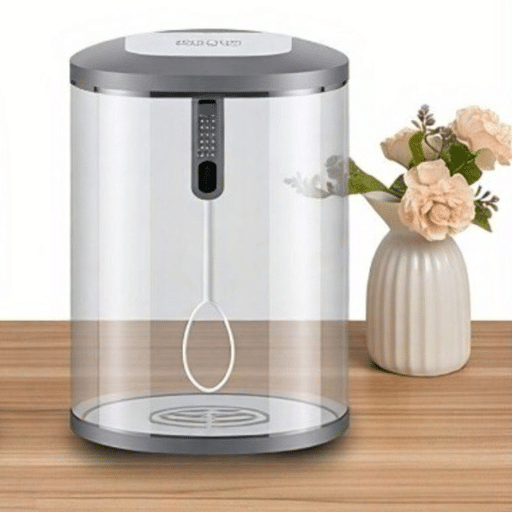
There is a variety of air purifiers and humidifiers suited to different requirements and preferences. Outlined below are five most common types with details about their functioning and working benefits:
HEPA Air Purifiers
These purifiers carry the label of High-Efficiency Particulate Air, capable of often-everyday cleaning violent or polluting almost 99.97% of particles measuring 0.3 microns and above in diameter, such as dust, pollen, or pet dander. Very useful for an allergic or asthmatic person.
Activated Carbon Air Purifiers
These air purifiers utilize activated carbon filters to absorb odors, gases, and VOCs. They are considered effective if the household includes a smoker or strong cooking odors.
Ultrasonic Humidifiers
An ultrasonic humidifier uses the high-frequency sound wave to generate a very fine mist of water, thus increasing humidity indoors effectively. They are extremely quiet to operate, with very low energy consumption.
Evaporative Humidifiers
These humidifiers work on nature’s evaporation. A fan passes air through a wet wick or filter and disperses moisture into the atmosphere. They are relatively easy to clean and are therefore best suited to large spaces.
Dual-Function Air Purifier and Humidifier Units
These machines make up for cleaning air and setting humidity levels with one device, becoming more versatile and saving space. They are best suited for homes in which the air quality and proper humidity levels are states of concern.
All of these options will guarantee their uniqueness in purposes to improve indoor air ambiance and comfortable living.
HEPA Air Purifiers and Their Benefits
Purifiers equipped with HEPA (High-Efficiency Particulate Air) filters stand out as one of the most efficient ways to improve indoor air quality. Airborne particles as small as 0.3 microns-the likes of dust, pollen, mold, bacteria, and some viruses-are trapped by HEPA air purifiers with an efficiency of 99.97%. Below are five important advantages of HEPA air purification:
Allergen Removal
HEPA air purifiers can remove pollen, dust mites, and pet dander, helping to reduce allergy symptoms.
Respiratory Health Benefits
By cleansing away particulates that irritate the respiratory system, a HEPA purifier adds to the overall healthiness of an indoor setting, especially for those with asthma or any other kind of respiratory disorder.
Removal of Airborne Pathogens
HEPA filters trap and hold odor-causing particles, basically meaning that your home will smell fresh instead of containing any unpleasant smells from smoke or cooking.
Better Sleep Quality
Cleaner air will produce an environment conducive to restful sleep, especially for those who have a sensitivity to some pollutants that may be disrupting their capacity to breathe properly at night.
With the above-mentioned benefits, making one of the HEPA air purifiers a part of your home should be an easy choice in aiding a clean and comfortable life for you and your family.
Different Types of Humidifiers
Different types of humidifiers are available for different needs and preferences. Here is a list of five common types of humidifiers, together with their details and functions:
Evaporative Humidifiers
These humidifiers blow air with the help of a fan through a wet filter or wick, dispersing moisture into the air. They are self-regulating since if the air is humid already, the evaporation rate starts going down. They are energy-efficient and best suited for medium-sized rooms.
Ultrasonic Humidifiers
These humidifiers use high-frequency sound vibrations to generate a fine mist of water and release it into the air. These models are almost noiseless; hence, they make a great option for bedrooms and nurseries. You can get them as either cool or warm mist.
Steam Vaporizers
Steam humidifiers-and the other names-are substances whose function is heating water and creating steam, which is cooled slightly before being tossed into the air. They kill germs and bacteria with high efficacy and can be helpful for those suffering from allergies or respiratory issues.
Impeller Humidifiers
Water is rotated off the disk onto a diffuser in impeller types of humidifiers, forming into fine droplets for misting into the air. They are quieter than many types and are available mostly as cool mists. Good for smaller spaces.
Central Humidifier
Installed in the HVAC system in a house, central humidifiers provide whole-house humidification. They are the most expensive type, but they are worth it for achieving an even humidity level in large spaces or in an entire house.
Each kind of humidifier serves a different purpose depending upon the environment and individual needs, so it is important to select the one that best fits your needs.
Choosing the Right Combination Device
A combination device is in question on choosing, it is necessary to analyze particular needs and priorities. The updated search data suggests that users often look for an improvement in air quality plus humidity control without compromise on efficiency. Sized according to the area, capacity, and various conveniences like HEPA filter or an automatic humidity sensor must be included in the considerations. Compact combination units would fit snugly in an office or a bedroom, while the larger units go well in open living areas or houses. Energy efficiency and maintenance are even searched for, again reinforcing their importance to consumers. By balancing what the unit specifies with the environment and lifestyle of a person, one can end up with a perfect setup of a device that offers comfort.
How to Use Air Purifiers and Humidifiers Effectively
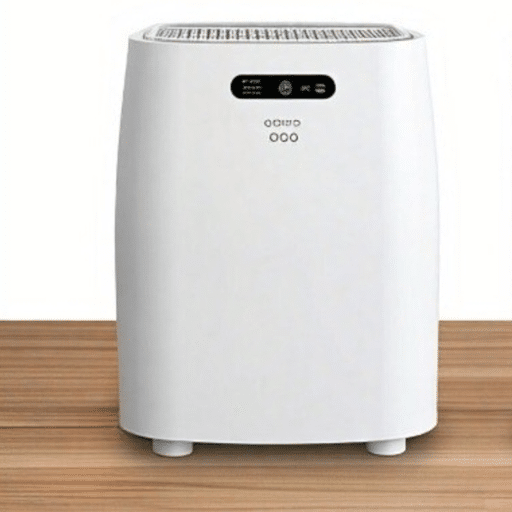
The placement of air purifiers and humidifiers should ensure the utmost execution of their purpose. Based on recent search data, consumers often ask the question about an ideal placement. Generally speaking, air purifiers can be best set up near sites where potential pollutants enter the home, near windows, doors, or in the areas of high traffic for maximum filtration of airborne particulates. Humidifiers, in the same way, disperse moisture evenly from the center of the room. Do not let either device be against any walls or heavy furniture, as their flow might be obstructed, affecting their ability to perform better.
Setting the Correct Levels
CDC Trending Searches reveal big-time worry Section on air and humidity distribution with air. Air humidity between 30% and 50% is good to prevent stuff like mold or simply being too dry. Most modern appliances nowadays have sensors that check the environmental conditions on the fly and adjust themselves accordingly, thus increasing the user-friendliness.
Regular Maintenance is Key
Further investigations reveal varied questions about the general maintenance of these units. Filters of air purifiers should be cleaned or replaced according to the manufacturer’s instructions for an ideal functioning of the device. Loading these conditioners with HEPA filters typically requires them to be replaced within about 6 to 12 months. For humidifiers, the water tanks should be emptied and disinfected on a regular basis to stop bacteria and mold building up. Going for units with an easy-to-clean design can only make life easier and better for indoor approaches.
While properly running an air purifier and humidifier enhances air quality, living gives you some facelift to some healthier less-conscious implementation.
Best Practices for Using an Air Purifier
Choose an Appropriate Location: Try to place the air purifier in a central spot within the room so that the air cannot be trapped by furniture or walls. Some studies say that best circulation and filtration can be achieved if the device is kept at least 3-5 feet above the floor.
Filter Type to Use: Purchase an air purifier with a HEPA filter or another type of high-efficiency filtration system. HEPA filters trap up to 99.97% of particles as tiny as 0.3 microns, ranging from dust, pollen, and pet dander.
Run It All Day, Every Day: Reaching the highest air purification efficiency is achieved by keeping the air purifier on all day. Modern air purifiers are quite energy efficient and designed to be used all the time, thus ensuring indoor air is always clean.
Replace Filters Regularly: Replace filters as per the manufacturer’s recommendation, which is usually every 6-12 months. Suspicion regarding faulty air quality can arise if the filters are not replaced in time, and hence the purifier efficiency can also get lowered.
Air Monitor Room Size: Make sure your air purifier corresponds to the room where it is placed. Check the Clean Air Delivery Rate (CADR) of the device to make sure that it meets or exceeds the requisites for your space. An inefficiently sized purifier may simply be “too little to do anything worth mentioning to clean the air”.
Best Practices for Using a Humidifier
Maintain Proper Humidity: The concern is to keep the humidity inside the house between 30% and 50%. Use a hygrometer to check humidity since very high humidity can encourage mold formation; very low humidity can cause drying up and discomfort.
Use Distilled Water: Use only distilled or demineralized water in the humidifier to avoid mineral deposits. The tap water may have impurities, which give out into the air or leave residues within the device.
Clean Regularly: To avoid mold, bacteria, and other harmful microorganisms, keep cleaning your humidifier every 1-3 days. Follow the manufacturer instructions regarding cleaning, and make sure to dry the device completely after cleaning.
Empty and Refill Water Daily: Replace the water every day to avoid stagnant water, a breeding ground for bacteria and molds; always use fresh water for better hygiene.
Give Proper Positioning to the Humidifier: Setting the humidifier on a flat, raised surface, away from a wall or fabric, helps to prevent any accumulation of moisture. Again, never set it on wood as that could ruin the finish due to the excessive moisture.
Maintaining Your Devices for Optimal Performance
If my devices are to be maintained properly, then I regularly clean them; I adhere to the manufacturer’s instructions for care; they are used and stored in appropriate environments. This way, I stand a chance of extending their working life and keeping them in proper working conditions.
References
- Innovative Design and Implementation of Portable and Rechargeable Air Purifier and Humidifier
Lamintang Journal
This study explores the integration of air purifiers and humidifiers with sustainable energy solutions. - Development and Performance Evaluation of an Intelligent Air Purifier/Humidifier Using Fuzzy Logic Controller
Oxford Academic
Discusses the design and efficiency of a combined air purifier and humidifier system. - Development of Air Purifier and Humidifier
IEEE Xplore
Focuses on the technological advancements and resource efficiency in air purifier and humidifier systems.
Frequently Asked Questions (FAQ)
What’s the difference between an air purifier and a humidifier?
An air purifier is designed to clean the air by removing pollutants such as dust, pet dander, mold spores, and volatile organic compounds using filters like HEPA. In contrast, a humidifier adds moisture to the air, which can help alleviate issues caused by dry air, such as dry skin or respiratory discomfort. Understanding these differences is crucial for choosing the right device for your indoor air quality needs.
Can I use an air purifier and a humidifier together?
Yes, using a humidifier together with an air purifier can be beneficial. The air purifier will clean the air by removing allergens and pollutants, while the humidifier will add moisture to the air, improving overall indoor air quality. This combination can be especially effective in environments where both dry air and air pollution are concerns.
How do air purifiers work to improve indoor air quality?
Air purifiers work by drawing in air through filters that capture particulate matter, allergens, and pollutants. Many use HEPA filters, which can trap small particles, ensuring that cleaner air is circulated back into your home. Some models also incorporate carbon filters to eliminate odors and volatile organic compounds, significantly enhancing the air quality in your living space.
Do I need an air purifier if I already use a humidifier?
While a humidifier helps to maintain humidity levels and can alleviate dry air issues, it does not clean the air. If you are concerned about allergens, dust, or other pollutants in your indoor air, using an air purifier in addition to your humidifier can help you achieve cleaner air and enhance your overall health and comfort.
What types of air purifiers are best for allergies?
For allergy sufferers, HEPA air purifiers are highly recommended as they can capture 99.97% of particles as small as 0.3 microns, including pollen, dust mites, and pet dander. Additionally, portable air purifiers with a high clean air delivery rate (CADR) can effectively improve air quality in specific rooms where allergens are most prevalent.
Can a humidifier help with asthma symptoms?
A humidifier can help alleviate asthma symptoms caused by dry air by adding moisture to the air, making it easier to breathe. However, it’s essential to maintain the humidifier properly, as an unclean humidifier can develop mold and bacteria, which could worsen respiratory issues.
What should I look for in an air purifier?
When choosing an air purifier, consider factors such as the type of filter it uses (HEPA is preferred for allergies), the room size it can effectively cover, its noise level, and additional features like air quality indicators and smart technology capabilities. Ensuring the device meets your air quality needs is crucial for effective performance.
What is a purifier and humidifier in one?
A purifier and humidifier in one is a device that combines the functions of both an air purifier and a humidifier. This type of appliance can clean the air while simultaneously adding moisture, making it a convenient option for maintaining optimal indoor air quality without needing to manage two separate devices.
How can I improve the air quality in my home?
To improve the air quality in your home, consider using an air purifier to remove allergens and pollutants, a humidifier to add moisture to dry air, and regularly cleaning your living space to reduce dust and dander. Additionally, ensuring good ventilation and avoiding indoor smoking can significantly enhance the air you breathe.

